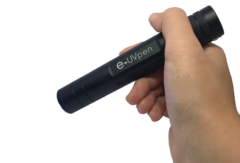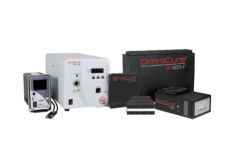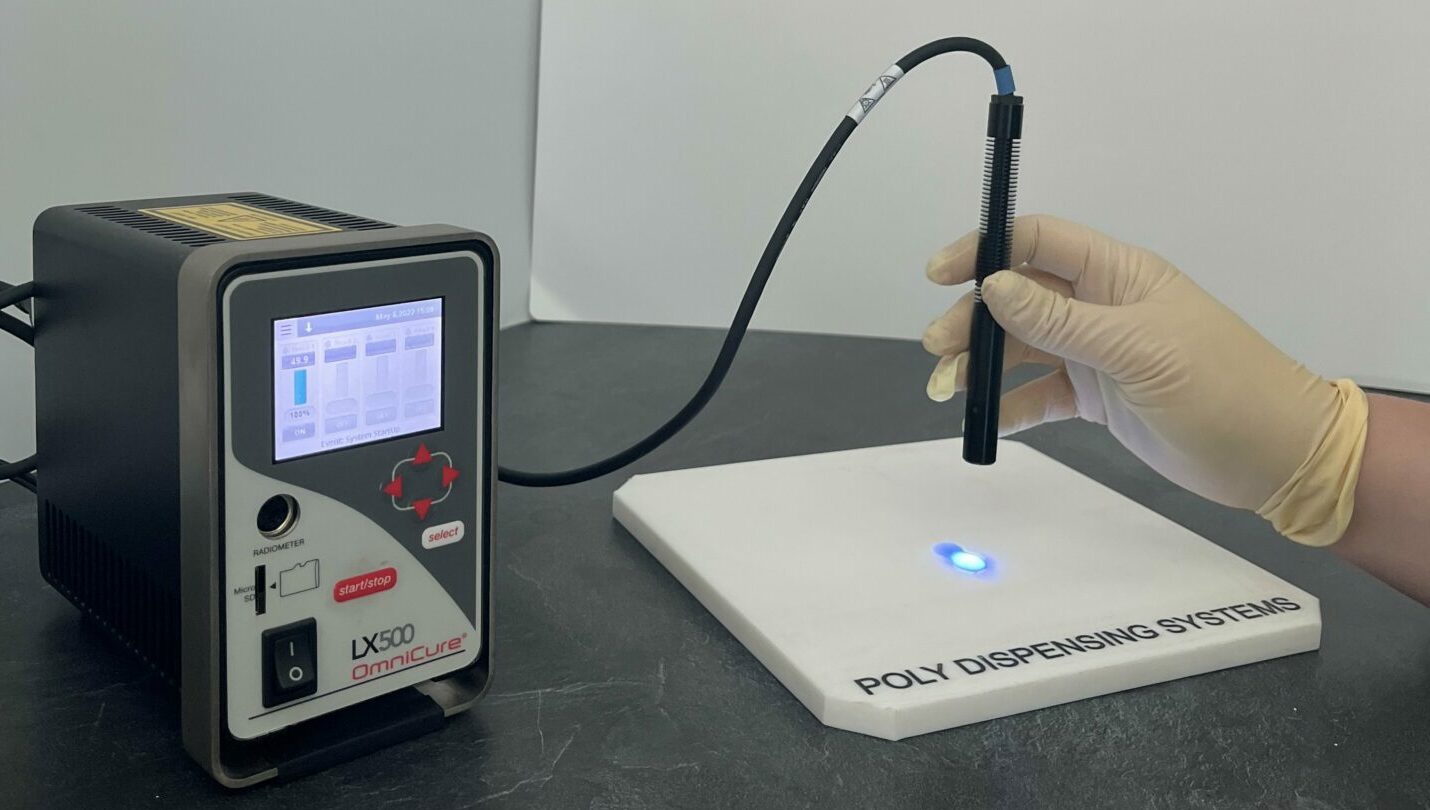UV curing has become an essential method for rapidly activating the crosslinking of technical adhesives, delivering gains in time, productivity, and performance. To ensure optimal adhesion and long-lasting durability, however, it is crucial to control key process parameters such as chemical formulation, UV intensity, exposure time, and ambient conditions.
What is crosslinking?
Crosslinking is a chemical process in which individual polymer chains are bonded together via covalent bonds to form a rigid three-dimensional network. This network improves a material’s strength, rigidity, and resistance to heat, chemicals, and aging.
In UV adhesives, crosslinking is triggered by exposure to UV light, which activates photoinitiators in the adhesive, initiating polymerization and transforming the liquid or gel into a solid adhesive in just seconds, without applying heat.
Importance of proper UV curing
UV curing, or “hardening” via UV exposure, activates photoinitiators in the adhesive, triggering a chemical reaction that transforms a liquid adhesive into a solid.
Proper exposure ensures full crosslinking, forming strong bonds with substrate surfaces that prevent detachment or assembly failure over time.
Additionally, UV curing reduces the need for heat, lowering both energy consumption and the carbon footprint of the process.
Best practice guidelines
To optimize the UV curing of adhesives, pay attention to these critical parameters:
- chemical formulation: use adhesive formulations compatible with uv activation.
- uv intensity: adjust based on required adhesion strength and material sensitivity.
- exposure time: fine-tune to ensure complete crosslinking without excessive heating.
- ambient conditions: control temperature, humidity, and air composition for consistent results.
UV curing equipment technologies
Types of UV lamps
Traditional UV lamp (mercury or metal halide)
These lamps contain mercury (or other metals) and emit a broad spectrum, mainly around 254 nm, 313 nm, 365 nm, and up to 400 nm.
Temperature: very high (200 to 400 °C), often requiring an air or water cooling system.
Characteristics:
– Slow start-up (several minutes).
– High power (up to several kW).
– Broad UV spectrum lighting (useful for a variety of formulations).
UV LED lamp (light-emitting diodes)
These lamps emit narrow-spectrum UV light, generally between 365 nm and 405 nm.
Temperature: low heat emission, ideal for sensitive substrates.
Characteristics:
– Instant start-up.
– Long service life (> 20,000 h).
– Low energy consumption.
– Compact format, suitable for automated lines or reduced spaces.

Advantages of UV curing equipment
| Advantages | Explanations |
| Ultra-fast curing | Hardening in a few seconds, reducing cycle times. |
| Lower energy consumption | Especially with UV LED lamps, which are much more efficient. |
| Low heat generation | Less risk for heat-sensitive materials. |
| Precise control | Possibility to adjust power, dosage, and wavelength. |
| Clean, solvent-free process | Reduction of VOCs (volatile organic compounds) for a healthier work environment. |
| Easy integration | Compact, modular systems compatible with automated production lines. |
UV adhesive curing methods

The curing of UV adhesives can be carried out using several methods, depending on the type of production, the geometry of the parts, and the expected performance.
– Fixed UV lamp curing: consists of exposing a stationary part under a UV source. This simple and cost-effective method is ideal for small series or precise manual applications.
– Conveyor UV tunnel: for higher throughput, continuous curing is achieved by passing parts under UV lamps installed in series on a conveyor belt. This solution is suited to automated production lines, ensuring repeatability and speed.
– Focused UV spot: in cases requiring high precision, such as for electronic or optical components, UV radiation is directed via an optical fiber to target very localized areas without exposing surrounding surfaces.
– Integrated UV LED lamps: offer a compact and flexible alternative. They can be integrated on robotic arms, print heads, or used manually for mobile applications or touch-ups.

LED array vs. spot source: the duel of industrial UV curing
Finally, some adhesives require dual activation. Combined UV + thermal curing associates UV radiation with a heat source (hot air or infrared), ensuring complete crosslinking and improved long-term durability.
Factors influencing UV curing
The proper curing of a UV adhesive depends on several interacting parameters. Fine control of these factors is essential to ensure complete, fast, and homogeneous crosslinking.
1. UV intensity and wavelength
Each adhesive reacts to a specific range of the UV spectrum, often between 320 and 400 nm. An unsuitable source (too weak or at the wrong wavelength) can cause partial or even no curing. Light intensity (measured in mW/cm²) determines the depth and speed of crosslinking.
2. Exposure time
Too short a time leads to incomplete crosslinking, while excessive exposure can damage certain materials or cause yellowing. The right balance must be found depending on the adhesive and the lamp type.
3. Adhesive film thickness
The thicker the film, the harder it is for the light to penetrate to the bottom. Some adhesives cure only within the first few microns. It is therefore essential to adjust the UV dose according to the geometry of the part.
4. Substrate transparency
In bonding through a substrate (e.g., glass, plastic), the material must allow UV light to pass. A tinted or opaque substrate can block radiation and prevent complete crosslinking.
5. Ambient environment
Temperature and humidity can influence the reactivity of certain adhesive components. An environment that is too cold or too humid may slow down or even inhibit polymerization.
6. Adhesive formulation
The presence of photoinitiators, viscosity, color, or the chemical nature of the binder play a key role. Some adhesives require secondary thermal or anaerobic curing in addition to UV.
Choosing the right UV adhesives
The choice depends on several criteria:
– Type of substrate: some adhesives are formulated for glass, others for metal or plastic.
– End applications: optical transparency, chemical resistance, flexibility, etc.
– Curing depth: adhesives with long-range photoinitiators (e.g., visible or LED-curable photoinitiators) are suitable for applications where UV light struggles to penetrate.
– Regulatory compliance: particularly for medical devices or food contact (ISO 10993 or FDA certifications).
Ideal conditions for effective crosslinking
The following optimal conditions are generally recommended:
– Controlled ambient temperature (20–25 °C) to avoid expansion or premature evaporation of possible solvents.
– Controlled atmosphere: in the absence of oxygen (nitrogen inerting) if surface inhibition is observed.
– Surface preparation: cleaning and degreasing before application to ensure good adhesion.
– Homogeneous adhesive dosing to guarantee uniform curing.

